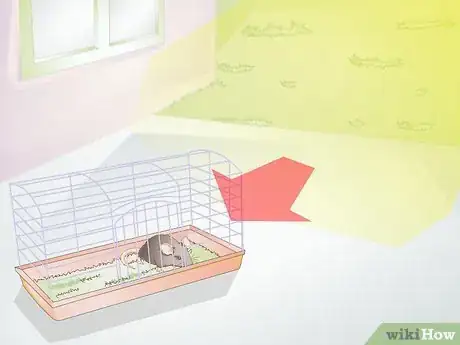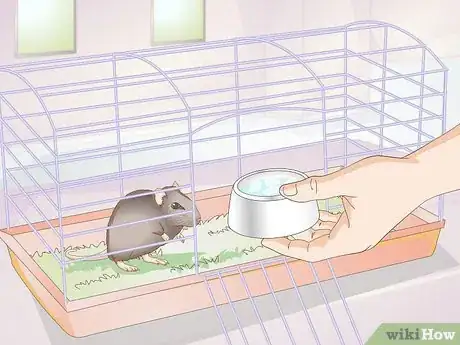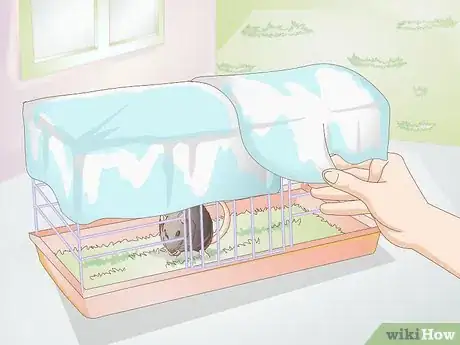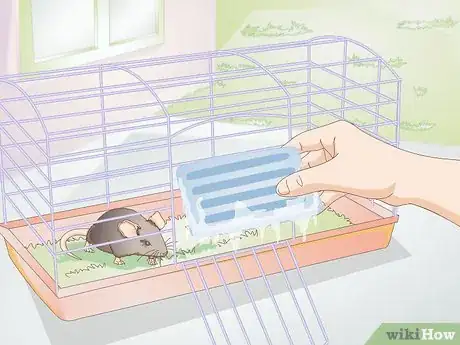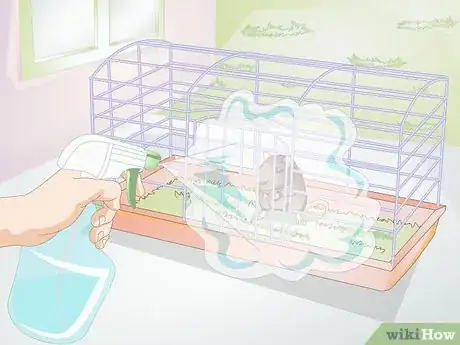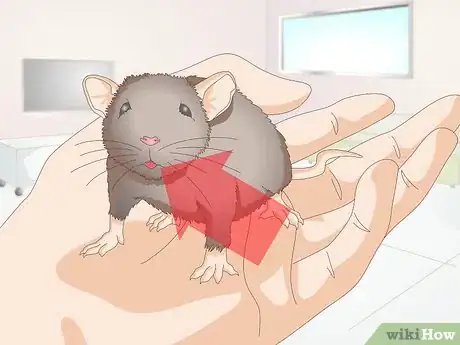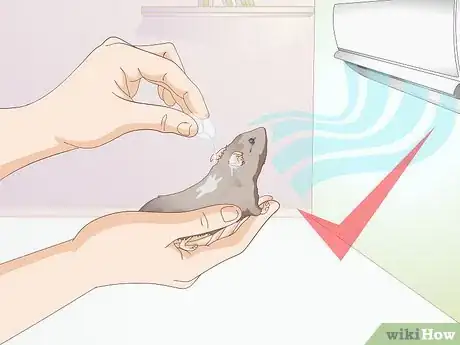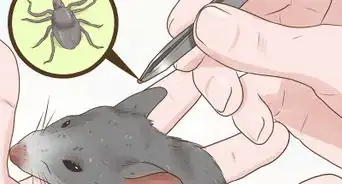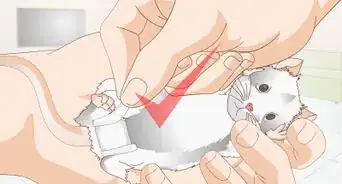This article was co-authored by Alisa Rassin. Alias Rassin is an Exotics Veterinarian and the Owner of The Exotic Animal Hospital of Pennsylvania in Lansdowne, Pennsylvania. With over a decade of experience, she specializes in treating reptiles, birds, and small mammals. She holds a Veterinariae Medicinae Doctoris from The University of Pennsylvania and a BS in Veterinary Biomedical and Clinical Sciences from Penn State University. She was also certified by the Royal College of Veterinary Surgeons.
This article has been viewed 40,850 times.
Heat and humidity are a potential peril for pets kept in human environments. Small pets like mice have a hard time adapting to hot or humid weather, and may be more susceptible to heat stress than other animals.[1] To avoid the possibility of injury or death for your pet mouse, make sure your little critter is kept comfortably cool and keep an eye out for signs of heat stress.
Steps
Adjusting the Environment
-
1Bring your mouse indoors if it's normally left outside. Some people house their smaller pets in outdoor hutches. While this may have its conveniences, it can be very dangerous in hot or humid weather.
- Mice are very susceptible to heat stress. It's partly because they're confined to a caged area (and can't retreat to cooler rooms) and partly because they have a hard time regulating their body temperatures.[2]
- Any time the weather is predicted to get 85 degrees Fahrenheit (30 degrees Celsius) or warmer, you should make sure your mice remain indoors.[3]
- The same goes for high humidity levels. If the humidity is predicted to exceed 60% in your area, keep your mice indoors.[4]
-
2Keep the cage out of direct sunlight. You may not feel too hot sitting next to a window on a summer day, but your mouse might. Direct sunlight can be very dangerous for mice, even on mildly warm or cool days, and heat can build up very quickly inside your mouse's cage.[5]
- Make sure the cage is kept indoors, and keep it away from any windows.
- If your mouse's cage must remain in a room with windows, make sure you close the curtains.
- Try to use thick curtains that block out heat and sunlight to help regulate the room's temperature.
Advertisement -
3Keep the room cool. In addition to moving your mouse into a shaded part of your home, keeping the room cool is one of the best things you can do.[6] If you're warm in the room, there's a good chance that your mouse is even warmer.
- If you have air conditioning, make sure it's turned on in the room your mouse cage is in.
- If you don't have air conditioning, use as many fans as you have to help circulate air around the room.[7] However, fans may not be too helpful since mice do not sweat.[8]
- The ideal room temperature for mice should be between 65 and 75 degrees Fahrenheit (18 to 23 degrees Celsius).[9]
-
4Try leaving the cage on a cool tile floor. One way to help keep your mouse cool is by leaving it on a cool floor. You can put your mouse's cage on a cool tile floor, or (if you can mouse-proof the room) try letting the mouse roam the tiled room outside of its cage. Just don't let a mouse roam freely in a large, open area like a basement or garage, or it might get away.[10]
- Tile floors tend to maintain some coolness, even when it's hot outside. If you don't have tile floors in any rooms, you might try a cool concrete floor.
- Laundry rooms, basements, and garages tend to have cool floors during hot weather, and may be good places to set your mouse's cage. However, you should never let mice run free outside the cage in these environments, as they may escape or hide.
Cooling Off Your Mouse's Cage
-
1Make sure your mouse has clean, cool water. Your mouse should have access to clean, cool water at all times. You may want to put out an extra water bowl/bottle, or consider adding some ice cubes to your mouse's usual water container.[11]
- Without access to clean water, your mouse can easily suffer a heat stroke. In extreme conditions, this could be fatal.
-
2Drape a cold, wet towel over the cage. One easy way to cool off the cage is by hanging cold, wet towels over it. This will help regulate the temperature inside the cage, especially if it's warm in your room.
- Fill your sink, bathtub, or a clean bucket full of cold water. Add ice cubes to really cool the water down.
- Soak one or two clean towels in the ice water. Let the fabric adjust to the temperature for a few minutes before you remove them.
- Wring out any excess water. You don't want the towels "raining" down on your mice, so make sure they're not dripping any water.
- Drape the towels over the cage. Make sure there are still some gaps between the towels and the floor of the cage to ensure proper ventilation.
- Check the towels periodically to make sure they're still cool. Repeat as necessary to keep the towels cold.
-
3Put ice packs in the cage. Ice packs are a great way to help your mouse keep cool. If you have ice packs, put them in one or two corners of the cage. If you don't, fill a plastic water bottle part way with water and leave it in the freezer overnight. You can also do this with empty plastic containers from margarine or cottage cheese, or by filling a shallow cooking pan with ice water.[12]
- Set the plastic water bottles on their sides on the floor of your cage. Make sure the bottles won't tip over onto your mouse.
- Some mice will lie on the bottles/containers/pans, or at least lie against the sides. Others won't.
- Even if your mouse doesn't lie on the container/bottle, it will still help lower the temperature inside the cage a little.
-
4Keep a spray bottle full of cool, clean water nearby. If it's really warm, you may want to consider misting your mouse to help it cool down. You can do this periodically on a regular interval, or any time your mouse appears to be uncomfortable or acting weird (though the mouse may already have heat stroke by that point).[13]
- Make sure the spray bottle can be set to mist instead of jet stream. You want to cool your mouse off gently, not blast it with a strong stream of water.
Recognizing the Risk of Heat Stress
-
1Check the temperature. A big factor in whether your mouse will be at risk of heat stress is how hot and humid it is outside. You can check this information in your local newspaper or online.[14]
- Any time the temperature outside reaches 85 degrees Fahrenheit (30 degrees Celsius), your mouse is at risk of suffering from heat stress.
- High humidity in warm climates can also cause heat stress for small animals. You should be able to check the humidity levels in your region wherever you check the weather.
-
2Learn the signs of heatstroke in mice. If you're worried about your mouse experiencing heat stress, it's a good idea to know what warning signs to look for. Some signs may appear early on when your mouse is merely stressed by the heat, while others will appear once your mouse is experiencing heat stroke.[15] Common signs to watch for include:
- panting
- slobbery/thick saliva
- bright red appearance to the tongue
- signs of weakness and/or reluctance to move
- convulsions (this is a sign that the heatstroke is pretty far advanced)
-
3Take action to save your mouse. If you believe your mouse is experiencing heat stroke, you'll need to act quickly. Start cooling your mouse off gradually at home and try to get your pet to the veterinarian or an after-hours clinic to make sure your mouse is healthy.[16]
- Move your mouse to a comfortably cool area, preferably one with air conditioning.
- If you don't have air conditioning inside your home, try taking your mouse's cage out to your car (if you have one) and turning on the AC inside.
- Use cool water to wet your mouse's ears, feet, and fur.
- Call your veterinarian. Ask for advice, and bring your mouse in right away if your vet recommends it.
- Place your mouse on a wet towel that has been soaked in cold water.
- Do not try to cool your mouse's body temperature down too rapidly, as this can result in serious medical complications.
- Don't be afraid to turn on the air conditioning and use a wet towel, as these things will help, but avoid trying to blast your mouse with cold conditions.
- Your vet will assess your mouse's condition and may recommend further care.
Expert Interview
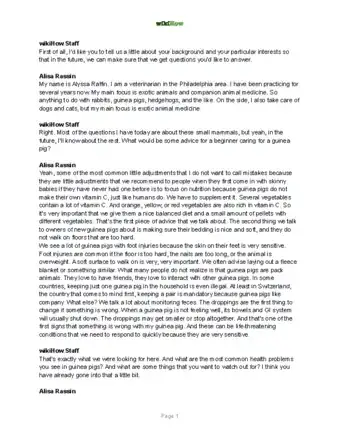
Thanks for reading our article! If you'd like to learn more about keeping mice cool, check out our in-depth interview with Alisa Rassin.
References
- ↑ http://agriculture.vic.gov.au/pets/other-pets/rats-and-mice
- ↑ http://www.bbc.co.uk/schools/gcsebitesize/science/aqa/heatingandcooling/heatingrev6.shtml
- ↑ http://agriculture.vic.gov.au/pets/other-pets/rats-and-mice
- ↑ https://www.jax.org/jax-mice-and-services/customer-support/technical-support/breeding-and-husbandry-support/mouse-room-conditions
- ↑ http://agriculture.vic.gov.au/pets/other-pets/rats-and-mice
- ↑ http://kb.rspca.org.au/what-can-i-do-in-hot-weather-to-prevent-heatstroke-in-my-pet_353.html
- ↑ http://www.afrma.org/hh_hottips.htm
- ↑ http://www.peteducation.com/article.cfm?c=18+1800&aid=3411
- ↑ https://www.jax.org/jax-mice-and-services/customer-support/technical-support/breeding-and-husbandry-support/mouse-room-conditions
- ↑ http://kb.rspca.org.au/what-can-i-do-in-hot-weather-to-prevent-heatstroke-in-my-pet_353.html
- ↑ http://kb.rspca.org.au/what-can-i-do-in-hot-weather-to-prevent-heatstroke-in-my-pet_353.html
- ↑ http://www.peteducation.com/article.cfm?c=18+1800&aid=3411
- ↑ http://www.afrma.org/hh_hottips.htm
- ↑ http://agriculture.vic.gov.au/pets/other-pets/rats-and-mice
- ↑ http://www.peteducation.com/article.cfm?c=18+1800&aid=3411
- ↑ http://www.peteducation.com/article.cfm?c=18+1800&aid=3411
About This Article
To keep your mouse cool in hot weather, make sure to keep its cage indoors and away from windows, as direct sunlight can be very dangerous. If the room is too warm, you can drape a cold, wet towel over the cage to help regulate the temperature inside. You should also provide plenty of cool, clean drinking water so it can stay hydrated. The optimum temperature for mice is between 65 and 75 degrees Fahrenheit, so if your room's still too warm, you can use air conditioning or fans to cool it down. For more tips from our Veterinary co-author, including how to recognize the signs of heatstroke in mice, read on!

